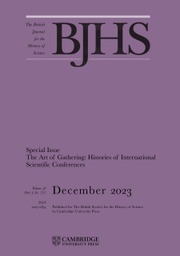Historians of science have written extensively on evolution and religion and some path-breaking works clarify how evolutionary theories have been received and understood in different places and contexts. Drawing on the important works of David Livingstone and Peter Harrison, among others, Evolutionary Theories and Religious Traditions attempts to focus the attention of scholars who work on science and religion on the significance of transnational and global network that produced a diverse and non-teleological reading of Darwin, Darwinism, evolutionary theories of various kinds and stakeholders and thinkers ranging from Comte to Kang Youwei. In their introduction, the editors, Bernard Lightman and Sarah Qidwai, alert us to the significance of understanding the diverse responses to evolutionary theories and invite us to go beyond national borders to make sense of the plurality of the responses and strategies that various stakeholders employed in accepting, rejecting and modifying evolutionary theories in different religious, regional, ideological and political contexts.
In three parts, the volume presents thirteen historically rich chapters that discuss how different places dealt with evolutionary theories, highlighting important figures who welcomed, accommodated and translated a variety of texts on evolutionary theory. The chapters discuss regions including northern India, Sri Lanka, Australia, Spain, Argentina, Egypt, China, Britain, Japan and Turkey. We encounter various figures who theorized and translated science and religion in the long nineteenth century who are not Western thinkers and writers. These include figures such as Joseph Hekekyan Bey in the context of semi-colonial Egypt, Ishikawa Seisho and Fujikawa Yu in the context of Japan and Kang Youwei in the context of China. It is impossible to discuss all the important names we encounter in the book in this short review, but it should be noted that these key figures played a crucial role that is mostly neglected in the literature on science and religion. These names, as various chapters attempt to show, are important not merely in the context of the places they worked, but also for understanding the transnational networks they were part of, and the translational efforts they made. The larger message of the volume, visible by taking the chapters together, is that figures such as Kang Youwei and Sayyid Ahmad Khan were not merely local intellectuals, but global in terms of the way they shaped and participated in the debates on evolutionary theories and religion.
The volume shows how different religious traditions and places received evolutionary theories differently. Even in a Catholic-dominated discourse, as Jaume Navarro discusses in the context of Spain, it was heterogeneous when it came to how evolution was perceived. It is thus interesting to note that there exists a plurality of debates on the reception and rejection of evolution even within a religious tradition. The volume has chapters that go beyond Christianity and discuss how religions such as Islam, Buddhism and Confucianism have debated and engaged with evolutionary theories.
The multiple temporalities and spatiality of evolution are clear from chapters such as the one on colonial Australia (Chapter 3). The institutional reception of Darwinism was slow in Australia since they were dealing with new universities. Even after evolution became a subject in the universities, it was not that other theories were completely abandoned. As the chapter shows, even in the 1920s and 1930s professors taught and engaged with other theories, including Lamarckian theory (p. 75). Various chapters in the volume show that evolutionary theories were not always about biology and scientific thinking. For instance, Edward Guimont (Chapter 4) discusses astronomical evolution; connections between astronomy and socialism (p. 84); religious and secular readings of extraterrestrial life (p. 86); and the imagination and reshaping of the connection between evolution, revolution and religion (p. 94). In the context of Argentina (Chapter 6) we see that the theory of evolution was seen through positivism and used for politics, progress and ideology.
The chapter on evolution and religion in transnational contexts (Chapter 9) by Fa-ti Fan and Bernard Lightman shows how global conversation and interaction were happening because of the availability of affordable books and periodicals on science, the result of new printing technologies (p. 194). This chapter, like many others, shows that the reception models that focus on how evolutionary theory was received in a particular national context are inadequate because of the variety of the ways in which Darwinism was received, accepted and rejected (p. 194). The chapter discusses how British, Japanese and Chinese intellectuals engaged with the relationship between evolution and religion within a global context, and how the global interactions produced a locally grounded, yet globally informed, discussion on evolution and religion.
The global-history framework, as the chapters in the volume demonstrate, is a powerful tool for writing the social and cultural history of science and religion. In asking us to rethink the linear historiography of science and religion, the volume can be seen as a pioneering effort in decolonizing ‘science and religion’ as a field. This magisterial volume, which has rich and insightful chapters by historians of science who shaped the field, such as Simon Schaffer and Bernard Lightman, among others, will certainly have a deep impact on science and religion scholarship in the coming years and will be immensely useful to scholars in the history of science, STS, religious studies and history of ideas. Lastly, the bibliography for further reading (pp. 377–82) is a useful resource for scholars and students in the field.



